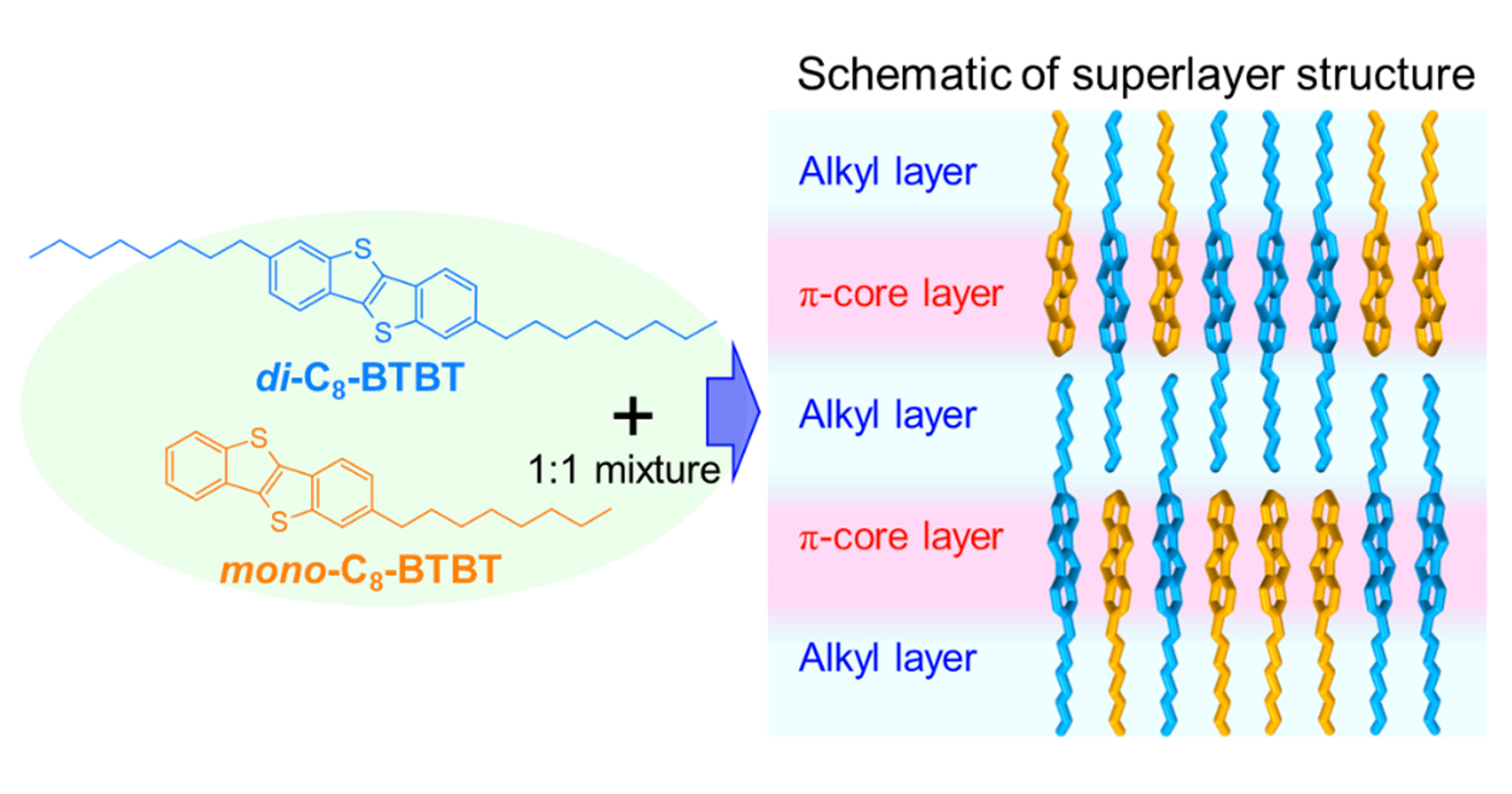Share this
Authors
Satoru Inoue, Toshiki Higashino, Kiyoshi Nikaido, Ryo Miyata, Satoshi Matsuoka, Mutsuo Tanaka, Seiji Tsuzuki, Sachio Horiuchi, Ryusuke Kondo, Ryoko Sagayama, Reiji Kumai, Daiki Sekine, Takayoshi Koyanagi, Masakazu Matsubara, Tatsuo Hasegawa
Abstract
Some rodlike organic molecules exhibit exceptionally high layered crystallinity when composed of a link between π-conjugated backbone (head) and alkyl chain (tail). These molecules are aligned side-by-side unidirectionally to form self-organized polar monomolecular layers, providing promising 2D materials and devices. However, their interlayer stacking arrangements have never been tunable, preventing the unidirectional arrangements of molecules in whole crystals. Here, it is demonstrated that polar/antipolar interlayer stacking can be systematically controlled by the alkyl carbon number n, when the molecules are designed to involve effectively weakened head-to-head affinity. They exhibit remarkable odd–even effect in the interlayer stacking: alternating head-to-head and tail-to-tail (antipolar) arrangement in odd-n crystals, and uniform head-to-tail (polar) arrangement in even-n crystals. The films show excellent field-effect transistor characteristics presenting unique polar/antipolar dependence and considerably improved subthreshold swing in the polar films. Additionally, the polar films present enhanced second-order nonlinear optical response along normal to the film plane. These findings are key for creating polarity-controlled optoelectronic materials and devices.
Advanced Science:https://onlinelibrary.wiley.com/doi/10.1002/advs.202308270
These Related Stories


